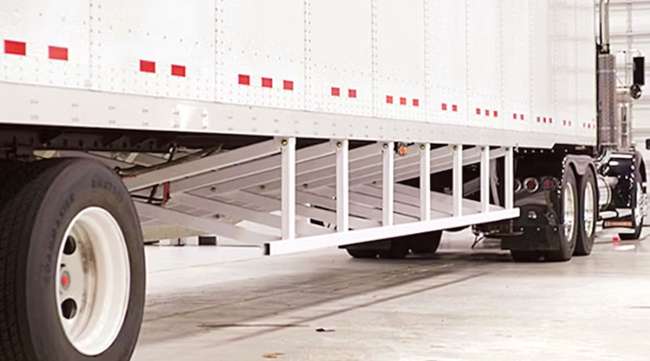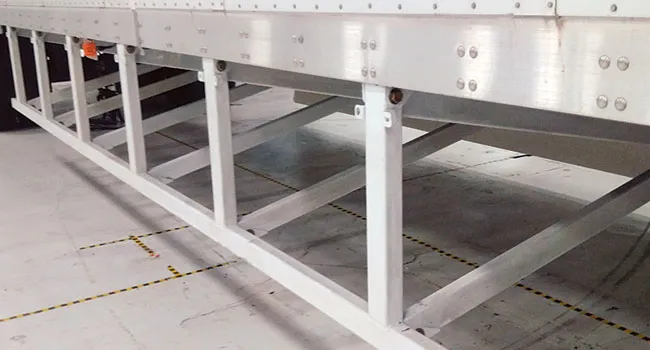Senior Reporter
NHTSA Advisory Group on Underride Protection Seeks Focus

[Stay on top of transportation news: Get TTNews in your inbox.]
At its second meeting after a nearly six-month hiatus, members of the Advisory Committee on Underride Protection began revealing their various divergent views on the wisdom of side underride guards for heavy trucks, sending a slate of questions back to regulators about how the committee should be going about its work.
For starters, board members said they wanted to meet more frequently, perhaps monthly, since they feel they’re racing to get their recommendations to the National Highway Traffic Safety Administration. The idea for the committee was first announced in July 2022, but the group didn’t begin its work until its May 25 initial meeting.
The overarching purpose of the committee is to provide advice and recommendations to the transportation secretary on safety regulations to reduce underride crashes.
During the four-hour virtual meeting Nov. 15, the committee put together a list of questions and requests for NHTSA to answer. They included:
- Provide any NHTSA-conducted or contracted testing or protocols of side and front underride guards and share all documentation available on the research conducted or contracted by NHTSA.
- Identify experts and provide speakers and written materials on crash avoidance technologies.
- Provide a review of data to show which types of vehicles are overrepresented or underrepresented in underride crashes resulting in serious injuries or fatalities — and whether NHTSA has access to funds in the next 12 months to conduct future research.
- In the side underride guard advance notice of proposed rulemaking, a 2018 computer modeling study was not used in the analysis. The committee requested a statement from NHTSA explaining why it was not used.
- A request that NHTSA share with the committee any efforts to educate state and local law enforcement officers on how to identify and document underride crashes as recommended by the Government Accountability Office.

American Trucking Associations has estimated that installing about 12 million side underride guards on trailers would cost the industry $34.8 billion. (AirFlow Deflector Inc.)
Some members complained that they need more guidance from NHTSA on how they should be approaching their task. They also asked NHTSA why the agency issued the side underride guard ANPRM before asking the committee for its recommendations.
NHTSA said the ANPRM responds to 2021 bipartisan infrastructure legislation that directs the DOT to complete research on side underride guards to better understand their potential overall effectiveness and assess their feasibility, benefits and costs, as well as any impacts on intermodal equipment, freight mobility and freight capacity associated with installing side underride guards on new trailers and semitrailers.
Many trucking stakeholders, including American Trucking Associations, have questioned the wisdom of mandating side guards, primarily because of a lack of research and the cost and additional weight they would add to a tractor-trailer combination. ATA has estimated that equipping trailers with side underride guards would cost about $2,900 each, and installing them on about 12 million vehicles would equate to approximately $34.8 billion spent on underride guards industrywide, including shipping.

Horvath
They also would weigh 500 to 1,000 pounds, subtracting available weight for truck cargo loads.
Committee member Dan Horvath, ATA’s senior vice president of regulatory affairs and safety policy, did not discuss ATA’s policy position but attempted to illustrate to fellow committee members that adding side underride guards will certainly include some operational considerations and challenges.
“One of the primary concerns that has been raised numerous times is the compatibility of a side underride guard with various trailer configurations,” Horvath said. “Tank trailers, intermodal containers, agricultural trailers, belt trailers or grain hoppers are concerns that need to be addressed.”
How can you start your own trucking business? We introduce you to a seasoned trucking business owner who transformed a simple idea into a thriving enterprise. Tune in above or by going to RoadSigns.ttnews.com.
He added, “Just because I’m showing you these pictures of operational challenges with installing side guards doesn’t mean that my answer is no. It’s just that we need to discuss it as part of this group.” Other committee members include representatives from trailer manufacturers Utility Trailer Manufacturing Co. and Wabash, component-manufacturer Hendrickson USA, and the International Longshore and Warehouse Union. They also include an owner-operator, two insurance industry executives, two accident reconstruction experts, safety groups speaking on behalf of people killed in truck-involved crashes, and researchers with expertise on the effectiveness and limitations of side and rear underride guards. The committee has elected Adrienne Gildea, deputy executive director at the Commercial Vehicle Safety Alliance, as its chair.
Committee member Jeff Bennett, CEO of Utility, pointed out some of the challenges of side underride guards. Comments from carriers have ranged from “negative impacts on trailer performance and efficiency” to “possibility of damage to the guard and the trailer.”
He also noted that Utility has not seen much interest in side underride guards from motor carriers. “In short, we can’t even give them away,” he said.
Want more news? Listen to today's daily briefing below or go here for more info:





